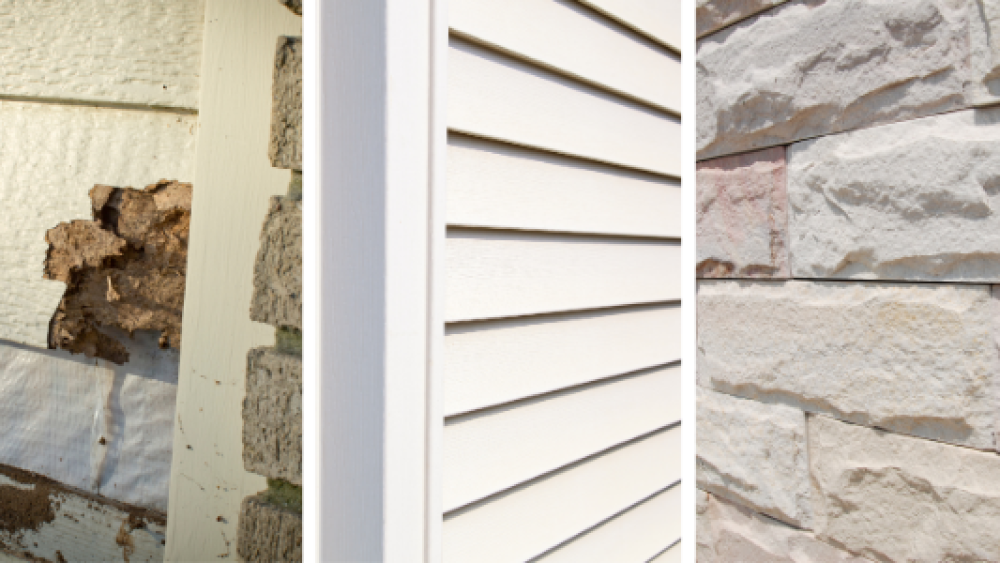Have you ever been afraid that you’re going to be Tom Hanks in “The Money Pit” when you buy a house?
Today, we’re going to talk about three materials that were commonly used in construction here in Georgia that either had lawsuits on them or were recalled.
Key Factors to Consider Before Making an Offer to Avoid Wasting Inspection Costs: Real Estate Insights
Everyone’s familiar with the movie “The Money Pit,” often referenced in our industry when clients express concerns about potential property pitfalls. I often reassure them that while a property may seem like ‘The Money Pit,’ waking up to Tom Hanks in your house could be either pleasant or horrifying. The key is to address any issues rather than disregarding them entirely, ensuring you don’t invest in a property only to face unexpected expenses later on.
Material number one: Atlas Chalet shingles.
In Georgia, shingle roofs, specifically asphalt shingles, are the prevalent choice when opting out of metal roofing. Asphalt shingles come in two different kinds.
- The three-tab shingle; it is easily recognizable by its appearance; resembling bricks neatly arranged in a row, with every alternate brick dash aligned. Typically, they are designed to endure for 20 to 25 years, though in Georgia’s intense sunlight, their lifespan often ranges between 15 and 20 years.
- Architectural shingles; The surface appears uneven as you move across it, lacking a clear line to follow. Instead, it has a textured look, making it difficult to trace a uniform pattern. These shingles typically come with a 30-year warranty and are considered a reliable option. While some may offer extended warranties of up to 50 years, we’ll focus on discussing three-tab and Architectural shingles for now.
Atlas Chalet shingles occupied a unique position between traditional three-tab and architectural shingles. Slightly larger than one and smaller than the other, they presented a textured appearance similar to architectural shingles. However, they were essentially three-tab shingles enhanced with additional granules, often in contrasting colors, creating a 3D effect. While they might appear impressive at first glance, upon closer inspection, their three-tab nature became evident, with alternating sets of shingles aligned in a straight line.
Not only did Atlas Chalet shingles face legal challenges, but they are also no longer manufactured. Due to their unique size and discontinued production, finding replacements can be difficult. Purchasing a property with these shingles, if left unaddressed, could lead to insurance issues. Some insurers may exclude coverage for the roof, leaving you vulnerable to leaks or policy cancellation.
It’s crucial to consult your insurance provider before buying a property with Atlas Chalet shingles or consider replacing the roof to mitigate potential risks.
Material number two: Polybutylene Piping.
This flexible gray tubing, known as Polybutylene, served as the plumbing system for transferring water throughout homes, offering ease of installation and flexibility around corners. While copper was previously used, its high cost and labor-intensive installation process led to the adoption of Polybutylene. Although it was convenient to install and repair, issues arose with connector points and certain brands, resulting in leaks and necessitating extensive replumbing efforts.
I’ve received estimates ranging from $20,000 to $30,000 for repiping entire properties with Polybutylene plumbing, although costs may vary depending on accessibility. In some cases, quotes have been as low as $4,000 to $8,000, particularly for homes with crawl spaces. However, the cost can vary widely, so it’s essential to have a plumber assess the situation if Polybutylene is disclosed before making an offer on the property.
It’s important not to confuse Polybutylene with the current PEX piping, which comes in two main types: PEX A and PEX B. PEX A is typically white and semi-clear, while PEX B is red for hot water and blue for cold water. Both types offer flexibility and are commonly used in new construction. While the future of PEX piping remains uncertain, there are currently no known issues with properly installed PEX tubing as long as it’s installed by a professional.
Material number three: LP siding.
Often referred to as Louisiana Pacific (LP) siding, this type of siding was designed to mimic wood, composed of a wood composite with a significant amount of glue. While some may label it as pressboard, the accuracy of this term is uncertain.
Houses with this type of siding experienced fewer problems when consistently maintained with proper painting and sealing. However, issues arose when homeowners deferred painting until necessary, rather than as preventative maintenance. Consequently, unpainted areas allowed water to seep in, leading to swelling and deterioration of the siding. In poorly maintained houses, the siding could easily disintegrate upon light pressure, contrasting with better-maintained properties where it might only start to delaminate. Hardiplank, a concrete siding resembling wood, is often used as a replacement for deteriorated siding.
In homes with well-maintained LP siding or a similar product, the typical approach is to replace damaged boards with Hardiplank equivalents. These replacements match the existing pattern and are strategically scattered among compromised areas. Additionally, the bottom section, approximately 3 feet up from the ground or surface, is replaced to prevent moisture wicking.
When dealing with LP siding, initially, homeowners often sought complete house renovations when issues arose. Nowadays, the more common approach involves replacing sections as needed, especially if the siding is well maintained. Typically, the first area susceptible to rot is the chimney, making it a crucial spot to inspect. If a house appears to have LP siding, examining the chimney can provide insight; if it’s made of Hardiplank, it indicates ongoing replacement efforts. It’s essential to understand the maintenance needs associated with this siding to make informed decisions when buying a property.
Hardiplank siding is often the preferred choice, with brick siding being a viable alternative. Replacing LP siding with brick is still a possibility, but it may not be the most advisable choice due to cost considerations, although it remains an option. While some homeowners prefer vinyl siding for its low maintenance, others are concerned about its tendency to fade over time. In general, people gravitate towards Hardiplank siding, brick, stone, or a combination thereof for modern construction, seeking durability and aesthetic appeal.
In summary, the preferred materials today typically include PEX or copper plumbing, architectural 30-year shingles from any reputable company, and Hardiplank siding.
Other construction materials may be present, so it’s essential to inquire about the materials used in your area and always schedule a thorough inspection. Hiring a certified inspector, accredited by organizations like ASHI, ensures they are knowledgeable about common materials and potential issues in your region. While there are other products with legal concerns, these three—Atlas Chalet shingles, Louisiana Pacific siding, and Polybutylene piping—are the most significant ones to be mindful of.
If you found this information beneficial, don’t miss out on additional content by visiting our YouTube channel. Please remember to like, subscribe, and give us a thumbs up if you appreciate our content and wish to stay informed with more complimentary information. Your support is greatly appreciated!
If you’re eager to delve deeper into real estate insights and receive our buyer guide eBook, CLICK HERE to reach out with your contact details. We’ll swiftly send you the eBook, inclusive of a checklist to guarantee your success in 2024!



